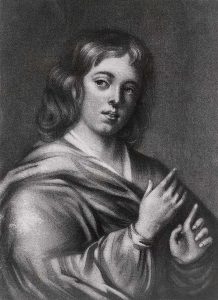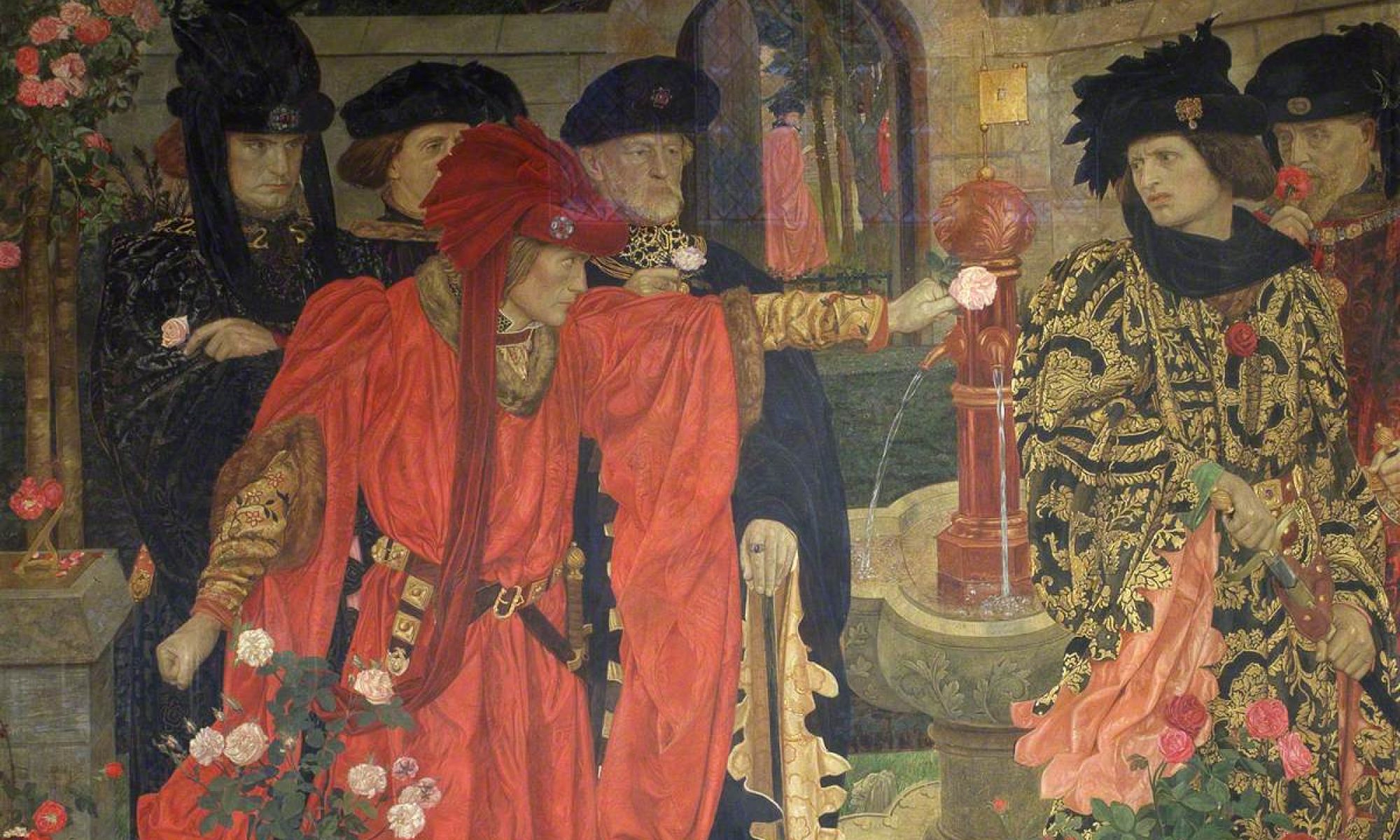
Edward Kynaston, or ‘the loveliest lady I ever saw in my life’[1] was born in 1640 to Thomas Kynaston and lived extravagantly for much of his childhood. His family were ‘well-descended’, living on an estate in Shropshire. Until the age of 14 Edward (known to his friends as Ned), lived there with his father, but in July 1654 he moved to London and began work as an apprentice for John Rhodes at the Company of Drapers. Although he trained with Rhodes for nine years, this move down to London introduced him to theatre and changed the course of his adult life forever.
In 1660, six years after Kynaston’s move, Charles II came to the throne and immediately reopened the theatres. Fresh-faced 20-year-old Kynaston was lucky enough to be introduced to Thomas Betterton (a hugely famous and successful actor of the time) by his employer John Rhodes. And thus began Ned’s love of theatre.
The 1660s and Charles II brought about a new era in theatre: women could perform on stage for the first time ever (previously young men and boys had been playing the role of damsel). This large and controversial change by King Charles II was originally frowned upon by many and the theatre was deemed scandalous and improper. This may have been because it was new or because women were often sexualised within the plays, but it left a substantial lack of females willing to act. And thus came Ned Kynaston’s time to shine.
Be it Aglaura[2], Ismena[3] or Arthiope[4], he clearly had a knack for playing women: he wasn’t afraid to and he did it well. So well in fact, that it was questioned whether any female actor could play women as well as he could. At the age of 20, Kynaston was, however, one of the last remaining male actors playing females. He was youthful, beautiful and fashionable; the only giveaway was his voice[6]. As they say, all good things must come to an end, and as time wore on, age began to take its toll, making it increasingly obvious that Kynaston was a man. This, combined with the increasingly popularity of actresses meant that Kynaston’s time as a woman was coming to an end. He began playing both male and female roles – sometimes within the same show, such as in Epicoene[7], where he played a boy in disguise as a woman. By 1661, with females beginning to claim their place on the boards, he knew it was time to move on. His last performance as a female came in 1661 as Evadne[5]. But this was by no means the end of his theatrical career. In fact, it was only just beginning.
Kynaston became an incredibly diverse male lead, playing varying roles including aristocrats (Guymor [8]) leaders (Mahomet Boabdelin [9] and The Black Prince [10]) and comic leads (Peregrine [11] and Valentine [12]). This diversity as an actor was uncommon, with many males sticking to and thriving in the same type of role throughout their lives – be it a fop or rover – leaving Kynaston incredibly well respected. So respected in fact, that by the late 1690s he was earning £3 a week, ten times more than a well-paid labourer at of this period.
His involvement in scathing, political comedies is where he found his forte, though they sometimes left him worse for wear. The satirical comedy The Heiress was even cancelled because Kynaston was ‘beaten with sticks’ leaving him ‘mightily bruised and forced to keep his bed’ by people who didn’t agree with the work’s content. His role was a satirical interpretation of Sir Charles Sedley, a dramatist and politician at the time, and although Kynaston only wanted laughs, he got a lot more than he bargained for. Luckily, he recovered from his injuries and the play went ahead, much to the disappointment of the attackers. Kynaston’s reputation for daring plays which pushed the societal boundaries and love of controversy only made him more popular with English audiences.
In his older years, he began to settle down, becoming heavily involved in the more administrative side of the acting companies. He even announced his retirement in 1677, although he didn’t actually retire for another 22 years…
His role as the Earl of Warwick in Queen Catharine is one of his last known performances in 1698 at the age of 58. With age came smaller parts, with actors often becoming the father or uncle or King, and it was no different for Kynaston. Although listed as one of the lead males, the Earl of Warwick has under a page of lines within Queen Catharine, simply assisting Edward IV and giving his advice to the Duke of Clarence. He is often on stage, although he says very little, indicating by just his presence that the Earl of Warwick is a respected man, and one that the younger males enjoy having around. This could in turn mirror Kynaston’s own social standing, as a highly respected man within theatre and society in general. This play was originally performed by very influential actors including John Verbruggen and Elizabeth Barry. The presence of these big names alongside Edward’s will have drawn many people to the theatre to watch the relatively unknown playwright Mary Pix’s play.
In 1712, 14 years after his final performance, Edward Kynaston died at the age of 72.
Kynaston lived an exciting and unusual life to the full. Be it rumours of his love affair with the Duke of Buckingham or his stopping of a performance for Charles II because he was unshaven, there was always gossip surrounding Ned. For that reason, in 2004 the film Stage Beauty was released, basing itself around his life story. The film is set in 1660, when women weren’t allowed to perform on stage by law, leaving Kynaston (played by Billy Crudup) as the central protagonist at the height of his career as a male playing females. Crudup chooses to play upon the foppish stereotype that was given to these male actors, exploring his sexuality and fame and the way in which this affected Kynaston as an actor.
[1] Samuel Pepys, Samuel Pepys Diary, ed. by Robert Latham and William Matthews (London: Element, 2010), Saturday August 18th, 1660.
[2] John Suckling, Aglaura, (London: John Haviland, 1638).
[3] Francis Beaumont and John Fletcher, The Maid in the Mill, (London: First Beaumont and Fletcher Folio, 1647).
[4] William Davenant, The Unfortunate Lovers, (Lonodn: 1643).
[5] Francis Beaumont and John Fletcher,The Maids Tragedy, (London: Francis Constable, 1619).
[6] Samuel Pepys Diary, Saturday August 18th, 1660.
[7] Ben Jonson, Epicoene, (London: Folio, 1616).
[8]John Dryden, The Indian Emperor, (London: Henry Herrington, 1667).
[9] John Dryden, Conquest of Granada, (London: 1672).
[10] Roger Boyle, The Black Prince, (London: Henry Herringman, 1669).
[11] Ben Jonson, Volpone, (London: Thomas Thorpe, 1607).
[12] William Wycherley, Love in a Wood, (London: 1672).
